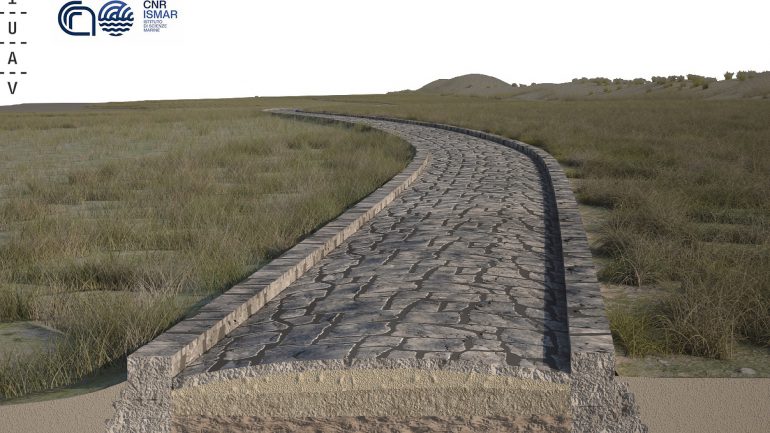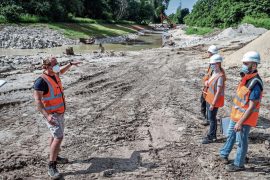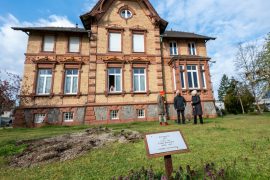At the northern end of the Venetian Lagoon, a Roman road probably ran along a submerged shore. This is the conclusion of a working group led by Fantina Madricardo from the Venice Marine Research Institute ISMAR based on high-resolution digital reconstructions of the ocean floor. The remains are now about four to six meters deep in a channel between the island of Sant’Erasmo and the town of Treporti on the peninsula that separates the northern part of the lagoon from the Adriatic Sea. Team reports in “Scientific Reports”. According to this, several sites of discovery are arranged in a row more than a kilometer long, where the typical capstones of Roman roads, called “basolis”, came to light during the dive. Some of these projected road sections that have been preserved are tens of meters long.
In addition to the previously identified structures, the team discovered four new remains near the posted road, which may have been part of a port facility. The discovery of such extensive Roman infrastructure outside the lagoon is remarkable because to this day it is disputed whether and to what extent the area was inhabited in Roman times. Many experts are of the opinion that the end of the Western Roman Empire coincided with the emergence of large settlements in the region; Roman finds in the lagoon area were only later found there, for example with reused building materials, the so-called spolia. Madricardo’s team refutes this notion. Roads and other finds suggest that the lagoon had extensive infrastructure even in Roman times – possibly in relation to the former canal that led behind the lagoon to the port of the Roman city of Altinum on the mainland. Perhaps the road to the south was also connected by an ancient route to Ravenna, the Via Popilia.
However, where the road built on the former beach wall, a slightly raised dome of sand and rubble behind the actual shore, cannot be determined with certainty, as the lagoon and the spit outside it have changed much since Roman times. . The road is now more than four meters under water, possibly because sea level has risen on one side and sediment has thickened beneath the beach on the other. In addition, the seabed next to the remains has been reduced by several meters by the current in today’s Treporti Canal. To the southwest, the east road cuts through a deep passageway between Lido and Traporti. These are strong and difficult to reconstruct changes in the lagoon and its islands, making it very difficult to rebuild the earlier settlement and infrastructure.

Web guru. Amateur thinker. Unapologetic problem solver. Zombie expert. Hipster-friendly travel geek. Social mediaholic.





